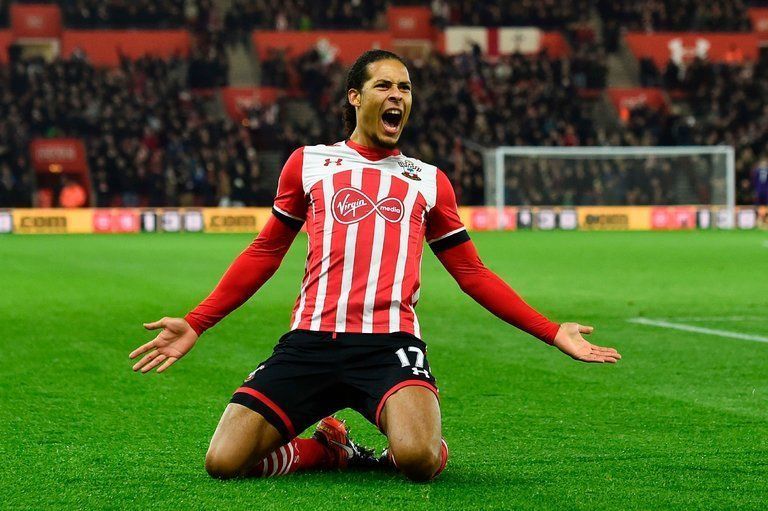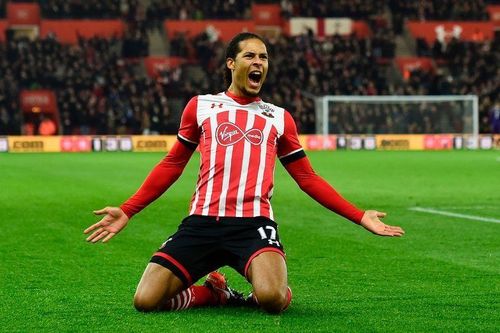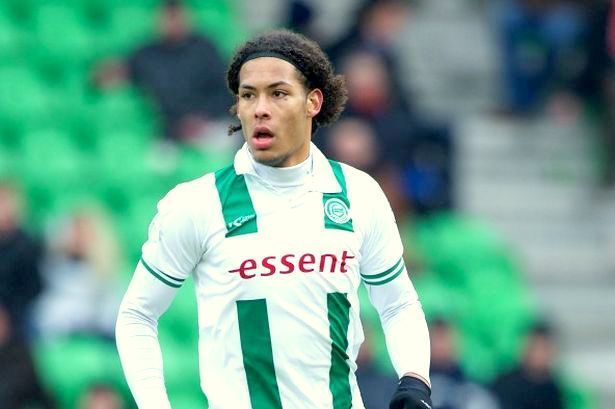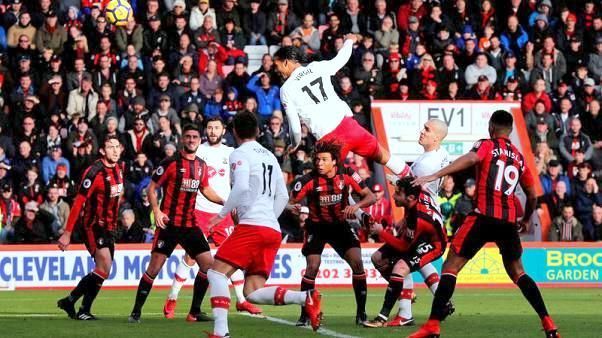
Liverpool's £75m Virgil Van Dijk: Analysing the world's most expensive defender

Liverpool have finally got their man, Virgil Van Dijk for a record-breaking sum of £75 million to make him the most expensive defender of all time. What the Reds from Merseyside have made here is a statement that they are not willing to sit back and watch their defensive unit go from bad to worse. They have shown intent and urge to turn things around by spending an exorbitant fee to land their target and due credit needs to be given to the board to have made such a bold decision.
The reason why Liverpool need to pat their backs is simply because we are enjoying the Premier League at a time wherein clubs are facing cut-throat competition from their rivals not only on the pitch but even in the transfer market.
So as a football club you either pay and compete or not pay and not compete. It is as simple as that. Van Dijk is merely 25 years old and this means that being a centre-back, he has another good 5-6 years left for him to be at his peak. In fact, centre-backs who remain fit can age up to 34 or 35 years and still be a significant member of the squad. It is important to factor this into account while considering the transfer fee of £75 million as Liverpool haven't paid the amount on a 20-year old who may not live up to his potential nor on a 30-year old who has only 2-3 years left in him.
Now moving on to analysing the Dutchman, let's start with a brief history:
History:

Van Dijk started his career at Groningen and now has made his way to Champions League football in 6 and half years time. After his debut in top-flight football with Groningen towards the end of the 2010-2011 season, he became an important member of the squad in the following season, when he was hardly 20 years of age. A consecutive run of good performances allowed him to earn a move to Celtic in the 2013-14 summer transfer window. Celtic scout, Neil McGuinness who found him to be a promising talent, had explained the reason behind their purchase.
"Virgil Van Dijk is everything you would want if you could create a profile of the ideal central defender“, said the Celtic scout.
Before making the decision to go for the Dutch centre-back, McGuinness had flown down to watch Groningen vs Vitesse, it was after that game their purchase decision was made. He went on to explain the incident as well.
"I eventually flew over to watch him in an away game against Vitesse Arnhem in early February 2013. The reason I picked this game was because he was up against Bony, who at the time was the top scorer in the Dutch league.
Bony was a really physical striker so it made sense to see him against the best forward in the league. Virgil did very well in that match.
That day he confirmed to me that he could be a successful player in British football. He had pace, power, height, good feet, and could defend."
After spending 2 seasons in Scotland, he was purchased by Southampton in the 2015-16 summer transfer window. The transfer fee was £13 million, which was a significant amount for a centre-back as far as Southampton’s standards were concerned. Van Dijk made heads turn in his very first season in England and became an important member of the Saints squad. A great run of form in the 2016-17 season - especially after the departure of Jose Fonte, won him much deserved critical acclaim. As many may know, he was almost transferred to Liverpool in the summer transfer window of 2017-18. He expressed his desire to leave by handing in a transfer request to the Saints and somehow the deal didn't go through in the summer. However, he has finally arrived where he wanted to be and now it is up to him to prove his worth and become a top player at Anfield.
Moving on to the analysis part, let us understand what he would bring to Liverpool's backline and for this purpose let us look at the four most important dimensions which are as follows:
On the ball:

Van Dijk is a right-footed yet capable of playing both as a right centre-back and left centre-back. The world's most expensive defender is well-known for his cool and composed demeanour on the ball. He has the ability to handle high-pressing effortlessly. It isn’t because the Dutchman has fancy tricks up his sleeve but it is his sheer confidence when he is control of the ball. When given space and time, Van Dijk wouldn’t think twice to charge forward and enter the attacking half. However, in Southampton, his fellow Dutchman Wesley Hoedt was in charge of ball playing. Hence, there wasn’t much scope for Van Dijk to penetrate the opponents with low & zipping vertical passes to the front-three and initiate attacks. When the opportunity does present itself, he does have the ability to be a ball-playing defender and he may well turn out to be successful playing that role under Jurgen Klopp. When in possession, there is a slight resemblance to German centre-back Mats Hummels, not in terms of quality but definitely in terms of style.
Off the ball:
The first and foremost advantage that Van Dijk brings to Liverpool’s defense is his aerial strength. Owing to his size, it is easier for him to shrug off opponents and win duels in the air. This is a prerequisite for centre-backs in the Premier League with a handful of teams deploying long-balls to attack the opposition.
Another important asset to his game is his anticipation and reading of the game. Van Dijk is one of the best interceptors in the Premier League this season and he often gets a fraction of a second ahead of his opponent to win back possession. Majority of his interceptions are when the Dutchman is right behind his opponent with the latter trying to receive the ball. Owing to this, Van Dijk is often in positions where he doesn’t necessarily have to tackle. In fact, it is actually a sign of a great defender as better the positions taken by him, the lesser he needs to tackle.
Here, I would like to remind you of a quote from the legend Paolo Maldini-
"If I have to make a tackle then I have already made a mistake. Tackling is a last resort, and you will need it, but it isn’t a quality to aspire to”
It basically means that if you are a defender with the right positioning, by default you are going to force the attacker to move away from goal and hence you would avoid the need to tackle. It is when you haven’t taken up the right position that an attacker is in control of the ball and you have to use the recovery tool called ‘tackle’ to win back possession. Having said this, it is definitely worth appreciating that being a centre-back, Van Dijk has made as few as 11 tackles out of 11 starts in the Premier League 2017-18.
The latest Liverpool signing is also yet to be booked this season. If you think about it from a logical standpoint, the lesser you tackle, the lesser are your chances to be booked. Thus, not being booked is simply a result of his anticipatory skills and avoiding the need to tackle the opponent one too many times in a game. Even otherwise, Van Dijk is a level-headed footballer in general and it is not often that you can find him losing his cool.
Mental attributes:
Van Dijk possesses one of the most sought-after qualities of a centre-back in the modern era or in one word, composure. His presence adds a sense of calm to the back line as he is not the defender who would dribble inside his own penalty area or try a trick or two in the final third. The Dutchman is a firm believer of the no-nonsense approach and hence we can expect the possibility for errors to be very low.
His aggression is something note-worthy when it comes to touch-tight defending especially in situations wherein the opponent is trying to receive the ball with him right behind. However, it is channelized in such a manner that he isn’t committing fouls at regular intervals. There haven’t been any significant weakness as far as his mental attributes are concerned as he is abnormally disciplined for the standards of a centre-back in the Premier League.
Van Dijk has accumulated merely 5 yellow cards and 1 red card since he joined Southampton in the 2015-16 campaign. The bookings can be further broken down season wise in order to understand the rarity of the Dutchman going into the books:
2015-16 Apps: 34, Yellow: 2, Red: 0
2016-17 Apps 21: Yellow 3, Red 1
2017-18 Apps 11: Yellow 0, Red 0
His only sending-off was in the game against West Brom when he was going shoulder-to-shoulder and slipped to fall onto Salomon Rondon, who could have been 1v1 with goalkeeper Fraser Forster. Hence, even the only red card wasn’t owing to him losing temper or a blind two-footed sliding challenge. The fact that Van Dijk is yet to be booked this season speaks for itself and there is no doubt that the £75 million hasn’t been spent on a hot-head.
Physical attributes:

The Dutchman stands 6 feet and 4 inches tall in the heart of defence and this allows him to have a commanding presence at the back. When it comes to aerial duels, he falls second to a very few in the game and thus trying to attack using headers isn’t a very good idea for the opposition forwards. For someone who’s about 193 centimetres tall, Van Dijk’s agility is astonishing. The former Southampton Captain’s speed combining with his anticipation is the major reason why he is able to intercept as often as he does. His acceleration is also worth mentioning as it would be much needed for Liverpool given how often their centre-backs are put in situations to deal with fast counter-attacks by the opponents. The Dutchman is rarely beaten in 1v1 situations and in case that does happen, he has the speed to recover quickly. Tall, strong, fast and agile- What more would a team want from their centre-back as far as the physical attributes are concerned?
Key stats:
Here are some numbers that summarise Van Dijk’s performance in the 2017-18 campaign so far (centre-backs with a minimum of 10 apps) :
* Most number of interceptions per game- 2.6
* Most number of aerial duels won per game- 5.4
* Least number of times dribbled past per game- 0.1
* Least number of tackles attempted per game- 1
* Least number of times booked- 0
Van Dijk's best performance this season was in the 1-1 draw away from home against Bournemouth. The centre-back had made 4 tackles, 7 interceptions and 8 clearances to ensure he kept a constantly threatening Bournemouth attack at bay.
Conclusion:
Living up to the pressure of an exorbitant transfer fee is one of the most difficult challenges that players seem to face in the modern era. Will Van Dijk be able to overcome the challenge and prove his critics wrong? Given that the Dutch defender has all the qualities necessary to shine in the Premier League, the answer to that question depends completely on his mental fitness and the ability to cope with the pressure of continuous expectation of delivering the goods week in and week out. Will the world's most expensive defender be able to thrive?